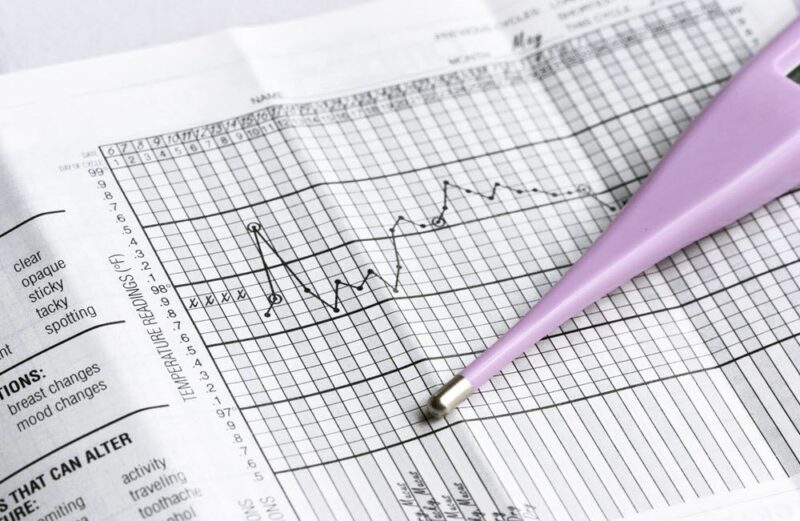
Source: Blairwitch/istockphoto.com
If you are trying to get pregnant, observing and recording your basal body temperature (BBT) can give you insight into your fertile window and help determine the best days to have sex.
This daily task may seem overly cumbersome, but it can easily become part of your daily schedule and will provide you with important knowledge about how your body operates, including when (and if) you ovulate, and can even indicate if you become pregnant.
What is Basal Body Temperature?
Basal body temperature (BBT) is the technical name for your body’s temperature at rest. Since our body temperature closely reflects our body’s metabolic rate (think of how slowly we burn energy when sleeping compared to when we are running), it is a useful way of measuring our body’s resting metabolism.
Progesterone, the hormone produced in abundance after ovulation until next menstruation, increases the body’s metabolic rate. Because of this increased metabolic rate, our BBT rises after ovulation under higher progesterone levels.
Most women will see a slight increase (0.5° to 1°F or 0.3° to 0.6° C) in body temperature during ovulation. For this reason, it can be a useful marker to learn more about your menstrual cycle and when your body ovulates. This is often referred to as a temperature shift.
When should you take it?
Since basal body temperature is a resting temperature, it should be taken immediately upon waking after at least a solid five hours of sleep.
What kind of thermometer do you need?
You will want to use a thermometer that is highly sensitive to get an accurate reading. Glass thermometers are best for accuracy, however, the disadvantage of them over digital thermometers is that they can break and they take longer to produce an accurate reading.
You can typically purchase a BBT thermometer from the family planning section of your local pharmacy.
How to Take your BBT
Temperatures can be taken orally, vaginally, or under the armpit. Each has its pros and cons so experiment with what works for you. Be sure to chart an entire cycle using only one method though since temperatures vary across different locations of the body and can thus interfere with getting an accurate picture of your body’s ovulatory shift.
How To Identify Your Basal Body Temperature Shift
To identify your BBT shift, you will need a way to graph your temperatures. You can do this on a piece of paper, on your computer, or by using an app specifically designed for this purpose.
The most common algorithm for identifying the basal body temperature shift is the identification of three normal high temperatures that are higher than the previous six normal temperatures (see below for a description of what constitutes an abnormal temperature).
Since the temperature shift reflects the rise in progesterone levels following ovulation, temperatures should remain high until just before the next expected menstruation.
If pregnancy occurs you may notice a second temperature rise, rather than a decline. A small percentage of people experience a dip in temperature on the day of ovulation. An additional dip on the day of implantation has also been noted by some clinicians, although this has never been formally studied.
Factors That May Lead To An Abnormal BBT Reading
Because basal body temperature reflects the body’s resting metabolism, any factors that interfere with the metabolic rate or daily hormonal rhythms can cause a false temperature. The most common causes of an abnormal temperature reading are:
- Infection (healthy ranges are around 97°F to 99°F or 36.1°C to 37.2°C)
- Travel (especially across time zones)
- Consumption of alcohol or drugs
- Disturbed sleep
- Allergies
Whenever a temperature measurement is unexpectedly high or low these factors should be considered. False temperature readings should be disregarded when calculating the basal body temperature shift.
How to Use Basal Body Temperature for Fertility
Since a human egg is usually only viable for conception for 12-24 hours, the BBT shift typically cannot be detected until it is too late to conceive. Typically, the most fertile days are 2 to 3 days before this temperature increase. However, monitoring basal body temperature is a useful tool because it helps confirm the presence of ovulation, a key factor when assessing fertility.
To determine when fertility is highest, BBT is often used in combination with other fertility awareness-based methods such as the cervical mucus method and cervical position. The combination of methods is often referred to as the symptothermal method.
It can take a few months to become comfortable charting and interpreting your results. Many fertility apps have online forums or Facebook groups that provide peer support for interpreting your cycles or you may choose to consult with a qualified teacher. The book, Taking Charge of Your Fertility by Toni Weschler provides comprehensive information on fertility awareness methods like BBT charting.